The Most Expensive Kite: Design and Innovation Explored

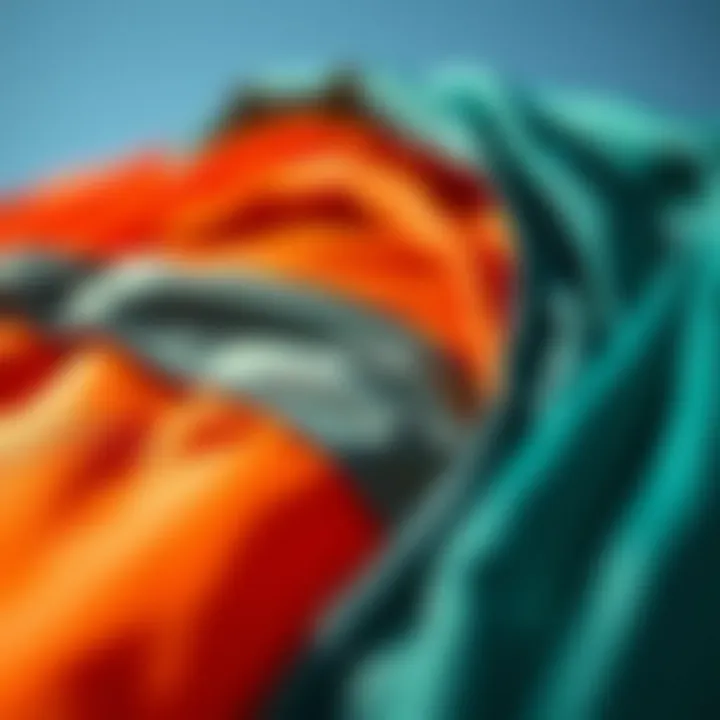
Intro
In the dynamic world of kiteboarding, there's a clear distinction between the everyday equipment and those extraordinary kites that command staggering prices. At the heart of this discussion is the most expensive kite, a remarkable piece of technology that intertwines luxury with performance. As kiteboarding enthusiasts seek out unparalleled experiences on the water, understanding the elements that elevate such kites to lofty price tags means uncovering a fascinating intersection of design, material choice, and innovation.
Gear Selection
When it comes to kiteboarding, gear selection plays a crucial role in enhancing the riding experience. A kite isn’t merely a tool; it’s a carefully crafted instrument designed to harness the wind’s power, and no two kites are alike.
Types of Kites
There are various types of kites to consider before diving into the world of luxury models. Each type caters to different riding styles and conditions:
- C-Kites: Known for their precise handling and performance, these are often used in competitions. Their shape allows for powerful jumps but requires a skilled hand.
- Bow Kites: Renowned for their stability and power, bow kites are excellent for beginners and are adaptable to various wind conditions.
- Delta Kites: These kites offer a great balance of ease in flight and handling. They provide good low-end power, making them versatile for different users.
- Hybrid Kites: Combining features from various other kite types, they are designed for all-around performance and can be suitable for different styles and conditions.
Understanding these distinctions is paramount when considering high-end kites, as each type offers a different experience that can be riveting for the rider.
Choosing the Right Board
Equally important is selecting the right board to complement the kite. Much like choosing a fine wine, pairing the kite with the correct board can amplify the experience significantly. Factors such as board size, shape, and flex must be taken into account:
- Deck Sizes: Larger boards provide more surface area for better floatation in light winds, while smaller boards allow for quick turns and faster speeds.
- Flex Patterns: A stiffer board typically offers more control and response in choppy conditions, whereas a softer board will provide a smoother ride over rough waters.
- Riding Styles: Freestyle, freeride, and wave riding all have boards tailored specifically to enhance performance in those areas.
Every aspect of gear selection contributes to the overall kiteboarding experience. It’s not just about selecting the most expensive or flashy piece of equipment, but about finding what works best for individual styles and needs. An informed choice leads not only to enjoyment but also to mastering the art of kiteboarding with confidence.
"Quality kiteboarding gear is an investment, and understanding what you need is key to making the right choice."
With this foundation of gear in mind, it’s essential to consider the next step—skill development. The right equipment only serves its purpose well when paired with the necessary skills to exploit its advantages.
Prelims to High-End Kites
When one thinks about kites, the image often conjured is that of a colorful flyer dancing in the sky, often associated with childhood memories or carefree days. However, in the realm of kiteboarding, kites represent much more than simple recreational toys. They symbolize advanced engineering, cutting-edge technology, and a deep appreciation for craftsmanship.
High-end kites have carved out a niche in the sporting world, attracting not just enthusiasts, but also serious athletes and collectors, all willing to invest heavily in a kite that promises superior performance and durability. This segment of kiteboarding products can be seen as an amalgamation of art and science; every stitch, every seam, and every fabric choice contributes to the kite’s overall efficacy, directly influencing its flyability and responsiveness.
Unpacking the Benefits
It’s essential to understand why high-end kites attract such investment. First and foremost, these kites often utilize high-performance materials—from specially engineered fabrics to high-grade stitching techniques that reduce drag and increase durability. They are designed to withstand extreme conditions, making them a practical choice for competitive use.
Additionally, advanced aerodynamic designs lend these kites enhanced stability and maneuverability, which can drastically improve the experience for the user. For serious kiters, the benefits translate into better performance and the ability to harness wind in ways that lower-end models simply can't match.
Considerations on High-End Kites
Investing in a high-end kite isn't just about splurging on a fancy piece of equipment. It’s a commitment to quality and an understanding of the sport's demands. Buyers must take various factors into account, including:
- Skill level: Not every kite is suited for beginners or intermediate riders. It’s crucial to match the kite’s capabilities with one’s experience.
- Intended use: The purpose—whether freestyle, wave riding, or racing—determines which features are most beneficial.
- Budget: While some might consider the price a barrier, viewing a high-end kite as a long-term investment in performance can shift the perspective significantly.
In the world of kiteboarding, a kite isn’t simply a tool; it’s an extension of the rider’s abilities.
Ultimately, the discussion surrounding high-end kites is layered. It intertwines not only the technical aspects but also the personal stories of those who choose to engage with kiteboarding at its highest level. This article will delve into each facet of what's required to label a kite as high-end, how it differs from standard offerings, and, ultimately, why the top-tier kites are worth considering for those serious about their sport.
Defining 'The Most Expensive Kite'
In the realm of kiteboarding, the phrase "the most expensive kite" carries a weight that transcends mere numbers. It's an exploration into craftsmanship, high-performance engineering, and the allure of luxury. Defining what makes a kite the costliest is not simply about a price tag; it entails understanding the intricate tapestry that comprises its design, materials, and innovations overall. The significance of this discussion can’t be overstated, as it lays the groundwork for recognizing the value behind such investments in kiteboarding gear.
Price Range of Kites
Kite prices can vary significantly, stretching from relatively affordable options to exorbitantly priced models that can make your eyes widen. On the lower end of the spectrum, you might find beginner kites priced between $200 to $600. These are usually built for durability rather than finesse. Once you step into the mid-range, typically around $600 to $1,500, options become more sophisticated, featuring enhanced materials and better performance.
However, it's the premium category that demands attention. Kites in this range can easily cost $2,000 and up, with some models pushing even higher—bordering on retail prices that feel more akin to luxury automobiles than sports gear. Here, you're not just paying for a product; you're investing in an experience, engineered for ultimate performance.
Factors Influencing Kite Pricing
Several factors contribute to the price of kites, which serve as indicators of quality and performance. A few of these critical components include:
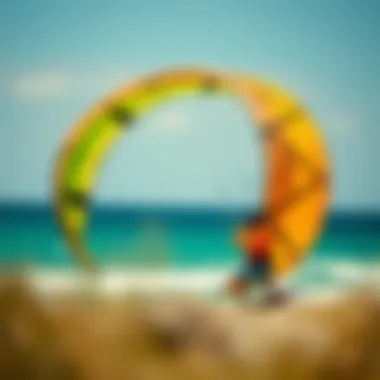
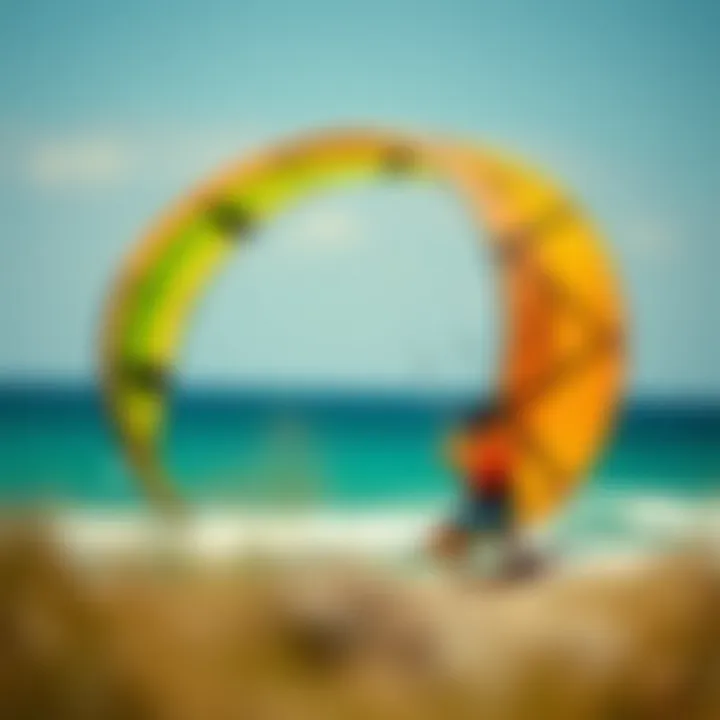
- Material Composition: High-grade fabrics such as ripstop nylon or polyester are costly, but they drastically improve durability and performance during kite flight.
- Technical Craftsmanship: The skill involved in kite construction can also affect pricing. Artisan kite builders invest considerable time and expertise, ensuring that their products not only perform well but also look stunning against the backdrop of sunny skies.
- Brand Reputation: Some brands carry a legacy that enhances their kites' market value. Renowned manufacturers are often viewed as standard-bearers for quality, prestige, influencing buyer decisions.
- Innovation: The integration of cutting-edge technology—like advanced control systems or innovative designs—adds a premium touch. Features designed to optimize aerodynamics can set apart the elite from basic offerings.
- Limited Editions: Limited-run models can fetch exorbitant prices. The notion of exclusivity drives collectors and enthusiasts to pay a premium for a kite that not just satisfies their sporting needs but also serves as a status symbol.
Understanding these nuances can help potential buyers appreciate the price tags attached to these high-flying marvels. As kiteboarding evolves into a premium sport, recognizing why one kite may cost significantly more than another provides deeper insights into what may very well be an essential facet of the hobby.
Materials Used in Premium Kites
When it comes to top-tier kites, the materials play a pivotal role in determining not just the price but also the overall performance and durability. Kiteboarding is a demanding sport, where each kite withstands various stresses from wind, water, and the wear and tear of repeated use. Therefore, choosing the right materials isn't merely an exercise in aesthetics; it’s an essential consideration that impacts the kite's functionality and lifespan.
High-end kites are built using advanced materials that exhibit lightweight characteristics yet provide substantial tensile strength. This balance is crucial because a kite that’s too heavy will not perform optimally, while one that's too flimsy may not survive harsh conditions. Additionally, the innovation in materials can lead to unique features like higher resistance to UV rays and saltwater corrosion, which are common challenges faced on the water.
One significant aspect to consider is how these materials affect the kite's ability to hold shape during flight. Amazing performance is achieved through meticulous material choice, allowing kites to maintain their form, even in turbulent weather. The incorporation of specific materials ensures that enthusiasts can enjoy the sport at its best, irrespective of external conditions.
High-Performance Fabrics
High-performance fabrics form the backbone of elite kites. These fabrics are engineered to provide unmatched performance while also standing resilient against the elements. One such fabric, known as ripstop nylon, has become a favorite among manufacturers. The interwoven design of this material prevents tearing and keeps small ruptures from expanding, which is a game-changer when a kite is airborne.
On the other hand, some kites utilize polyester blends that offer both strength and a degree of elasticity. This flexibility can help absorb the shock from sudden gusts of wind, thus preserving the integrity of the kite during high-stress moments. Notably, the choice between nylon and polyester may come down to specific riding conditions and personal preference.
Moreover, more luxurious kites might incorporate Dyneema fabric, celebrated for being incredibly light and tough. This, coupled with its UV resistance, extends the kite's lifespan significantly. Kiteboarding professionals often lean towards such materials, knowing that their kite can handle frequent use without significant degradation.
"The fabric's performance in flight underpins both usability and longevity, making it a crucial factor for enthusiasts and professionals alike."
Reinforcements and Durability
Beyond the outer materials, there are reinforcements within the kite that directly contribute to its durability. Manufacturers often employ technologies like double or triple stitching at stress points. For example, the corners and seams of a kite face the brunt of forces during flight, and as such, ensuring these areas are reinforced can prevent catastrophic failures during use.
Additionally, many high-end kites feature strategically-placed reinforcements made from tougher fabrics like Kevlar. This material is known for its incredible strength and is often added in areas where wear and tear are anticipated. Such thoughtful engineering reflects an understanding of the kiteboarding environment and user demands.
The durability of a kite does not only protect the initial investment but also plays a role in the environmental aspects of the sport. A kite that lasts longer means fewer replacements, which subsequently reduces waste and the demand for new materials.
The Role of Innovation
In the pursuit of what defines the most expensive kites, innovation plays a central role. This isn't just about crafting something visually stunning; it's about marrying cutting-edge engineering with tried-and-true craftsmanship. The evolution of kite design has come a long way since the simple paper constructions of yore. Kites today are modified for performance; they bridge the gap between high-function and aesthetic appeal.
Adopting new methods in design, especially regarding aerodynamics, grants these high-end products a significant edge.
Aerodynamic Design Enhancements
Aerodynamics is critical when discussing kite performance. A well-designed kite minimizes drag while maximizing lift, allowing for better flight stability. High-end kites incorporate refined shapes and contours that have been fine-tuned through extensive wind tunnel testing and real-world trials. This kind of meticulous attention to detail ensures that even in turbulent conditions, the kite remains agile and responsive.
For instance, many luxury kites boast an ultra-smooth leading edge to slice through the air with ease. Some manufacturers utilize alternative shapes, such as delta or bow designs, which are optimal for different wind conditions. These variations help kiteboarders maintain greater control and execute advanced maneuvers with higher precision.
It's also worth noting that advanced airfoil designs don't just enhance performance; they can draw power from even the lightest winds. This ensures that high-end kites are usable in a broad range of environments, expanding the accessibility for serious enthusiasts who wish to kiteboard in varied conditions.
Technological Integration
Another fascinating aspect of modern kites is the seamless integration of technology. Today, premium kites often come equipped with innovative features that enhance both safety and performance. For example, some brands are now integrating GPS modules or onboard sensors that help measure height or speed, providing data that can inform future riding sessions.
These advancements give kiteboarders insights into their performance, allowing them to tweak techniques or even modify kite settings for optimal results. Digital apps are also becoming a standard, strengthening the connection between equipment and user experience.
Furthermore, the inclusion of smart materials, such as shape-changing fabrics, can increase the kites’ adaptability to changing wind conditions. Such technology allows kites to perform in unpredictable environments while maintaining their structural integrity.
In summary, the role of innovation in the kiteboarding scene cannot be overstated. It not only elevates the sport but also legitimizes the higher price point of some kites. As manufacturers continue to push boundaries, kite enthusiasts will see an ever-growing wheelhouse of options that offer unmatched performance and character in their flying experience.
Noteworthy Examples of Expensive Kites
As we plunge into the realm of high-end kites, it becomes strikingly apparent that certain models stand out from the crowd. These kites are not just functional objects; they symbolize the intersection of art, technology, and investment. Understanding these noteworthy examples provides insight into what elevates a kite from a simple recreational device to a luxurious possession.
Expensive kites offer unique attributes, often combining superior materials and expert craftsmanship, thus hiking their market value. Customers are drawn to these kites not just for their performance but also for the status they confer. The tales behind these kites reveal the stories of innovation, exclusivity, and sometimes, sheer passion.
Kite A: The Pinnacle of Luxury
Kite A, known as the "AeroMaster Luxe," is truly the pinnacle of luxury in kite design. The retail price of this kite can skyrocket to an astonishing $20,000. Crafted from a blend of high-performance ripstop nylon and rare carbon fiber, its lightweight build allows for unmatched aerodynamics and control. The color palette is an intricate pattern of iridescent hues, which glisten under the sunlight.
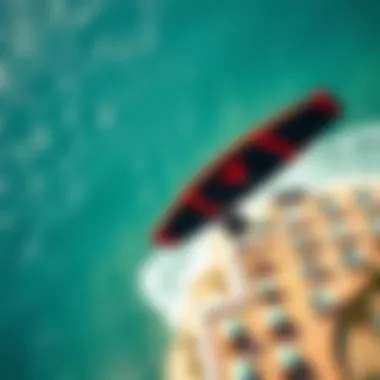
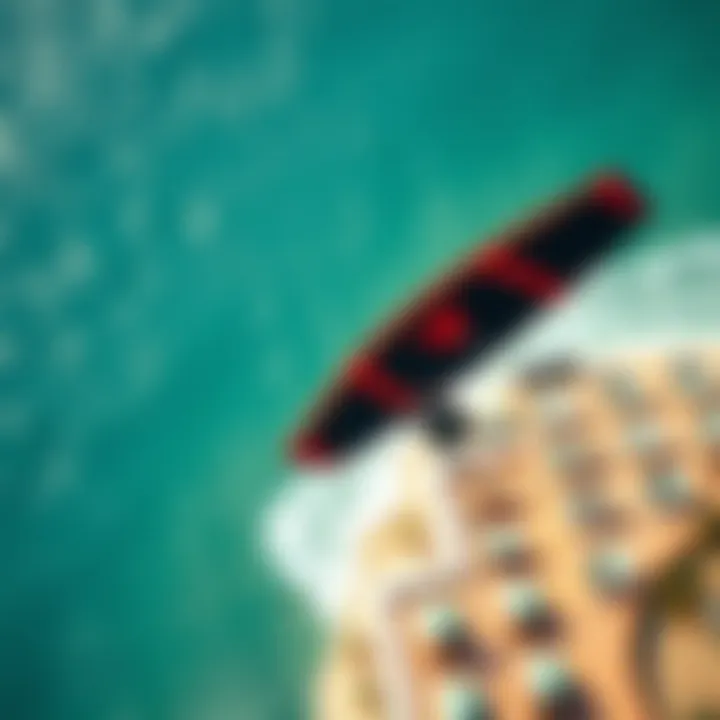
Its design is a collaboration with renowned aerodynamics experts, ensuring not just aesthetic appeal but also superior functionality. Kite A serves as a collector’s dream, often becoming a centerpiece in high-end kite festivals around the world. It’s said that owning it brings not just joy but an immense feeling of prestige.
Kite B: Performance Meets Prestige
The "Veloce Prestige" kite is another exemplary model, standing out as a harmonious blend of performance and elegance. Costing around $15,000, it is favored by competitive kiteboarders who expect exceptional handling and speed. This kite features an innovative control system that integrates micro-sensors, adjusting the angle and tension in real-time, enhancing maneuverability.
What sets the Veloce Prestige apart is its commitment to performance while retaining a luxurious touch. It showcases a unique carbon-kevlar frame that withstands extreme winds, ensuring longevity. Users rave not only about its technical capabilities but also its visually striking design that is impossible to ignore.
Kite C: A Collector's Item
Kite C, or the "Heritage Collector's Edition," is one of the rarest kites available, often fetching prices upwards of $25,000 at auctions. This kite represents a rich history; each model features hand-painted designs from skilled artisans, making every piece unique. Initially produced to commemorate the centennial of kiteboarding, only a limited number were ever made.
Beyond its artistry, the Heritage Collector's Edition is built with materials that are no longer widely available. Collectors view it as a museum piece, a testimony to the evolution of kite design. Owning this kite signifies membership in an exclusive club of enthusiasts who value both the history and future of kiteboarding.
The intricate craftsmanship and innovative technologies in these kites redefine luxury, making them not merely tools for recreation, but valuable investments.
In summary, each of these kites offers a distinct perspective on what makes high-end equipment coveted. From the attention to detail in their design to the communities fostered around them, these kites are much more than toys; they are gateways to a lifestyle of excellence.
Market Demand for High-End Kites
Understanding the market demand for high-end kites forms a critical pillar of analyzing luxury kiteboarding gear. This segment not only illustrates an appreciation for performance and craftsmanship but it also emphasizes the socio-economic factors motivating enthusiasts and collectors alike. When we examine this demand closely, we find that it reflects a multifaceted relationship between desire, status, and the thrill of the kiteboarding experience itself.
The allure of high-end kites is about more than just price; it encapsulates a lifestyle choice. The demographic seeking these premium products often includes affluent individuals who participate in water sports as a form of leisure activity. Buying an expensive kite isn’t solely about the kite's performance; it also highlights the owner's status and passion for the sport. This intersection of luxury and utility creates a unique market dynamic that can't be ignored.
Target Demographics
Target demographics for high-end kites generally fall into a few distinct categories.
- Affluent Professionals: Often aged between 30-50, this group includes well-off individuals with stable incomes. They enjoy spending on leisure activities that offer both excitement and relaxation.
- Kiteboarding Enthusiasts: Many kiteboarders dedicate substantial time honing their skills. For them, owning a premium kite represents long-term utility, enhancing performance at competitive levels.
- Collectors: Some buyers lean toward collecting, viewing special edition kites or unique designs as investment pieces. They may not use these kites regularly but appreciate their craftsmanship and rarity.
In marketing terms, manufacturers often target messages towards aspirational lifestyles, focusing on the exclusivity and advanced technology these kites carry. The appeal is subtle yet potent; it blends functionality with the prestige of ownership.
Consumer Behavior Insights
Digging deeper into consumer behavior reveals fascinating insights regarding high-end kite purchases. Several patterns emerge:
- Influence of Peer Groups: Just like a flock of birds, consumers often rely on the opinions and experiences of fellow kiteboarders. Recommendations from friends or community members can significantly influence decisions, fostering a cycle of desired products that reflect social standing.
- Brand Loyalty: Many high-end kite brands have cultivated strong loyalty through exceptional customer experiences and top-notch performance. Customers often return to these brands when upgrading or adding to their collections. Brands like Naish and Slingshot have created an almost cult-like following, ensuring continuous demand.
- Event Participation: For the kiteboarding elite, participating in prestigious events can result in direct influence on purchasing behavior. When individuals see top athletes using certain kites, curiosity about those products often peaks. It’s not uncommon for attendees at kite surfing competitions to purchase gear showcased during these events, driven by the desire to emulate professional performance.
- Online Communities and Social Media: The rise of social media platforms and forums has also shaped purchasing choices. Visual content showcasing product performance, reviews on platforms like Reddit, and trending designs on Instagram can drive immediate sales.
"The kiteboarding community thrives on shared experiences, making peer influence a powerful purchasing motivator."
The Psychological Aspect of Buying Expensive Kites
Understanding the psychological motivations behind purchasing high-end kites is key to grasping the overall landscape of luxury kiteboarding. For many, investing in an expensive kite transcends mere functionality; it becomes a statement of identity, a reflection of personal values, and a means to enhance one's experience in the sport. This section lays bare the intricate factors that compel consumers to open their wallets for premium gear, all the while considering the nuances of satisfaction and prestige that come along with it.
Status Symbol in Kiteboarding
In many social circles, owning an expensive kite signifies more than just a love for kiteboarding—it turns into a status symbol. Like fine watches or luxury cars, premium kites often communicate one's success and social standing. When a kiteboarder uses a high-priced kite, they are not only showcasing their investment in quality but also their commitment to the sport at a level many aspire to reach.
Here’s where human psychology enters the game. The concept of 'keeping up with the Joneses' applies strongly in sports communities. Seeing peers flaunting state-of-the-art kites can evoke feelings of envy or aspiration. In a sport as visually engaging as kiteboarding, the kite acts as a prominent feature, capturing attention on the water.
For instance, imagine a vibrant, cutting-edge kite slicing through the waves; it invites admiration from onlookers. This admiration feeds into the self-image of the rider, further solidifying the kite’s role as a symbol of prestige. The emotional high from being recognized for owning a luxury item can be intoxicating, leading to what some might describe as an arms race—where enthusiasts continuously seek to outdo each other with increasingly expensive equipment.
The Experience of Ownership
Ownership extends far beyond material possession. For avid kiteboarders, it encompasses the entire experience that comes with using a high-end kite. This psychological element is often overlooked yet critically important. The feeling of having a top-notch kite in hand invokes pride and fulfillment. Kiteboarders may find that their investment enhances the thrill of riding, which can translate into a deeper emotional connection with the sport itself.
Owning an expensive kite often invites a world of benefits, such as:
- Enhanced Performance: High-quality kites tend to offer better responsiveness and stability, elevating the overall riding experience.
- Community and Recognition: Engaging with others who appreciate the nuances of premium equipment fosters a sense of belonging.
- Craftsmanship Appreciation: The intricate designs and meticulous engineering of high-end kites cultivate admiration for the art of kite production.
When users unfold their expensive kites on the beach, it’s like unveiling a piece of art. The sheer joy goes beyond kiteboarding; it’s about celebrating oneself as connoisseurs of craftsmanship and performance. Such experiences often extend to sharing stories with fellow kiteboarders, outlining the unique features of their kites and the adventures they've had, solidifying social bonds.
"Investing in an expensive kite is more than just a financial commitment; it’s a journey into the heart of a community and a celebration of the art of kiteboarding."
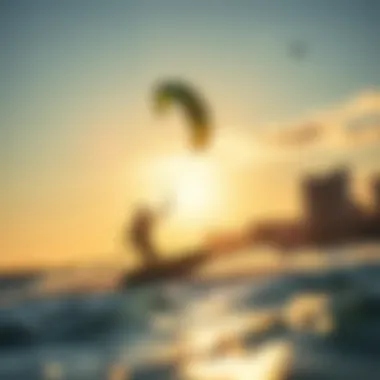
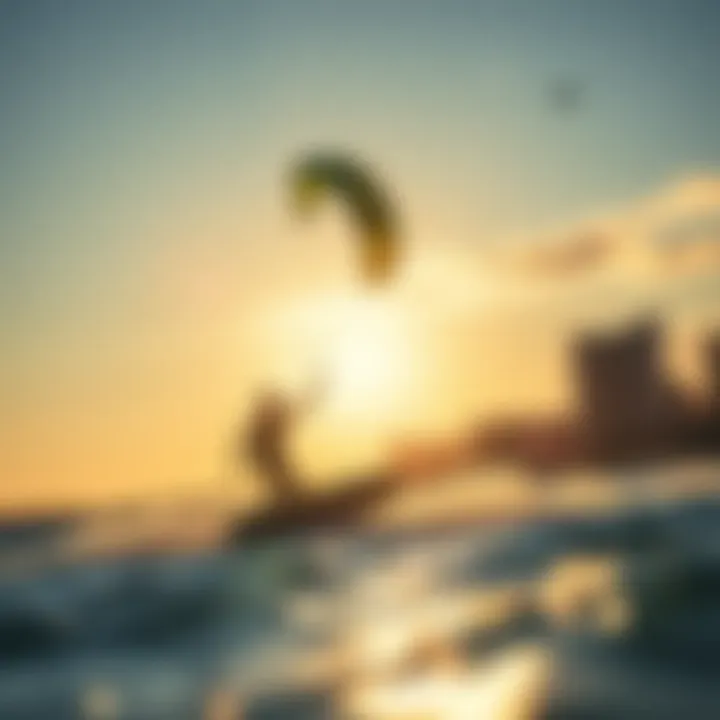
In essence, the psychological layers surrounding the purchase of expensive kites reveal that it’s not just about the cost or the materials; it’s intertwined with identity, experience, and community interactions. Kiteboarding enthusiasts invest not only in a product but in their passion and their place within a vibrant, dynamic community.
Environmental Considerations
The topic of environmental considerations is increasingly pertinent in today’s consumer-driven world, especially when it comes to luxury items such as high-end kites. As kiteboarding enthusiasts become more environmentally conscious, manufacturers and brands are recognizing the need to integrate sustainable practices into their production processes. This shift isn't merely a passing trend; it’s a response to the pressing realities of climate change and ecological degradation. In exploring the environmental considerations associated with the most expensive kites, we delve into the choice of materials, manufacturing techniques, and the broader impacts these decisions have on our planet.
Sustainability of Materials
When assessing the sustainability of materials in high-end kites, we find a rich tapestry of choices that hobbyists and manufacturers alike must navigate. Modern kite makers are increasingly turning to recycled materials or those sourced through sustainable means. For instance, ripstop nylon, a popular fabric in kite construction, can be produced without depleting natural resources, especially when utilizing recycled sources. This not only reduces the carbon footprint but also demonstrates a commitment to responsible craftsmanship.
Some of the key materials considered include:
- Recycled Polyesters: These materials often come from repurposed plastic bottles and packaging, contributing to reducing oceanic waste.
- Eco-Friendly Coatings: Utilizing biodegradable coatings helps to minimize harm to the environment, compared to synthetic alternatives which can be harmful if not disposed of properly.
- Natural Fibers: Kite makers are experimenting with natural materials like hemp or bamboo, which can offer strong performance without the environmental burden.
The push for sustainable materials represents a broader trend in luxury goods, emphasizing that quality does not have to come at the cost of the environment. This movement not only addresses ecological concerns but also appeals to a demographic of kiteboarders who respect both the artistry of kite-making and the natural world they immerse themselves in.
Ethical Manufacturing Practices
The conversation surrounding ethical manufacturing practices is intertwined with sustainability and environmentalism. Kite brands that prioritize ethical practices often choose to manufacture their products in facilities that uphold fair labor standards. These manufacturers typically provide safe working conditions and fair compensation to workers, distinguishing themselves in a market where ethical considerations are becoming significant.
Key aspects of ethical manufacturing in kite production might include:
- Fair Labor Practices: Ensuring workers are not subjected to exploitation or unsafe working conditions reflects a commitment to humane economic practices.
- Local Sourcing: Some brands opt to source their materials locally, reducing transportation emissions and supporting local economies. This grassroots approach often leads to quality craftsmanship, as local artisans contribute their expertise.
- Transparency in Production: Many luxury kite brands now highlight their production process and materials used, providing customers with insight into how their products are made. This level of transparency is a growing expectation among consumers.
"As consumers, we can choose to support brands that view profit as a means to an end—creating quality products that also enrich our communities and respect our planet."
Future Trends in Kite Development
The kiteboarding industry is on the cusp of transformation. As technology advances, the kites themselves are evolving at a remarkable pace. This section explores the significance of these upcoming trends in kite development, particularly as they pertain to the most extravagant models. By understanding the future of kite design and functionality, enthusiasts and professionals alike can make informed choices that align with their aspirations in the sport.
Emerging Technologies in Kite Design
When it comes to kite design, we are seeing a surge of innovation that pushes the boundaries of what is possible. Among the most noteworthy advancements is the use of smart fabrics that can adapt to changing weather conditions. These synthetic materials not only improve durability but also enhance responsiveness in turbulent winds.
- Integrated Sensors: Some top-tier kites are now being equipped with sensors that measure wind speed and direction. This real-time data allows kiteboarders to adjust their techniques or gear instantly, leading to more controlled and enjoyable rides.
- 3D Printing: The emergence of 3D printing technology has enabled kite manufacturers to craft complex designs that were once unfeasible. This can result in lighter kites that don’t compromise on strength or performance.
- Eco-Friendly Materials: As the awareness of sustainability rises, the kiteboarding industry is tapping into bio-degradable composites and recycled materials. This not only appeals to a growing segment of environmentally conscious consumers but also enhances the overall craftsmanship of high-end kites.
Interestingly, these technological uses are fostering a sense of community among kiteboarders, who often share their experiences with novel kite designs and functionalities on platforms like Reddit.
Predictions for Luxury Market Growth
The luxury kite market is set to witness significant growth in the coming years. Various factors contribute to this, including the increasing number of individuals turning to kiteboarding as a premium leisure activity. The sport has gained appeal not just for its exhilarating nature but also for the exclusive lifestyle that accompanies it.
Some trends to observe include:
- Rising Disposable Incomes: More people are willing to invest in high-quality gear. The availability of luxury kites makes the sport accessible to a broader demographic.
- Experiential Focus: As consumer preferences shift toward experiences over material possessions, kites embody not just a product but a gateway to adventure, exploration, and connection.
- Social Media Influence: The visual appeal of kiteboarding makes it a hot topic across platforms like Instagram and Facebook. Influencers showcasing premium kites are driving interest and demand.
In addition, as brands innovate and create more personalized kite experiences, buyers are likely to see kites as not just sports equipment but as collectibles, fueling an ongoing cycle of interest and investment. According to recent studies, the luxury market as a whole is expected to grow substantially, reflecting broader trends in consumer behavior and spending.
In essence, the future of kite development is bright, and the discerning kiteboarder can look forward to an exciting array of advancements that enhance their experience on the water.
Culmination: The Value of Investment in Kiteboarding
When diving into the intricacies of kiteboarding, it's easy to get swept up in the thrill of the ride and the beauty of the landscapes. However, as we come to the end of our exploration of high-end kites, one major question looms: Do these exquisite kites warrant their lofty price tags? This conclusion seeks to uncover the reasons why investing in expensive kites can be more than just adding a shiny object to one’s gear collection.
Evaluating Performance vs. Cost
In the world of kiteboarding, performance is king. A kite that promises better control, speed, and stability can drastically change your experience on the water. When evaluating kites, discerning kiteboarders will consider several factors:
- Material Quality: Premium kites often use cutting-edge materials that aren't just lightweight but also provide increased durability under harsh conditions. These materials, such as ripstop nylon and advanced synthetic fabrics, can significantly affect kite handling.
- Design Innovations: The aerodynamic features of high-end kites allow for better lift and maneuverability. Kite manufacturers continuously invest in R&D to create designs that can enhance performance in various wind conditions.
- User Experience: The feel of a kite when it’s flown can often justify the cost. A kite that responds perfectly to your every command may indeed be worth the extra penny. Enthusiasts share tales of how a particular kite transformed their riding style, allowing for tricks previously thought unattainable.
- Longevity and Maintenance: Sometimes, spending more money upfront can save you in the long run. Less wear and tear means fewer replacements and repairs, which compounds savings over time.
"Investing in quality kites generally yields better performance, safety, and enjoyment on the water."
Ultimately, it's essential to weigh these performance benefits against the associated costs. A well-rounded kite can be the difference between an enjoyable day on the water and a frustrating one.
The Lasting Impact of Expensive Kites
Buying expensive kites isn't just about performance; it’s also an investment in the experience and culture of kiteboarding. The impact of these luxury items extends far beyond individual improvements:
- Community Perception: Owning high-end kites often places individuals within a certain status in the kiteboarding community. They become ambassadors for quality, setting standards for others.
- Inspiring Innovation: As kiteboarders invest in premium products, it fuels competition and innovation within the industry. High demand for advanced technologies drives manufacturers to push the boundaries of design and functionality.
- Resale Value: A well-maintained, high-end kite can carry significant resale value. Collectors and enthusiasts are often willing to pay top dollar for limited-edition models, which can turn a luxury purchase into a lucrative one.
- Environmental Factors: Investing in high-quality kites can also align with sustainability goals. Many top brands are putting forth efforts in making eco-friendly kites, thus appealing to eco-conscious individuals.















